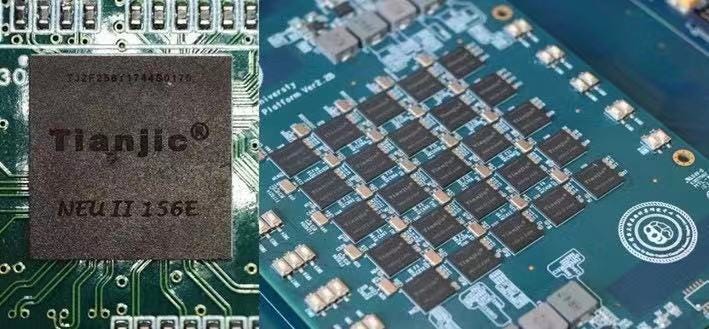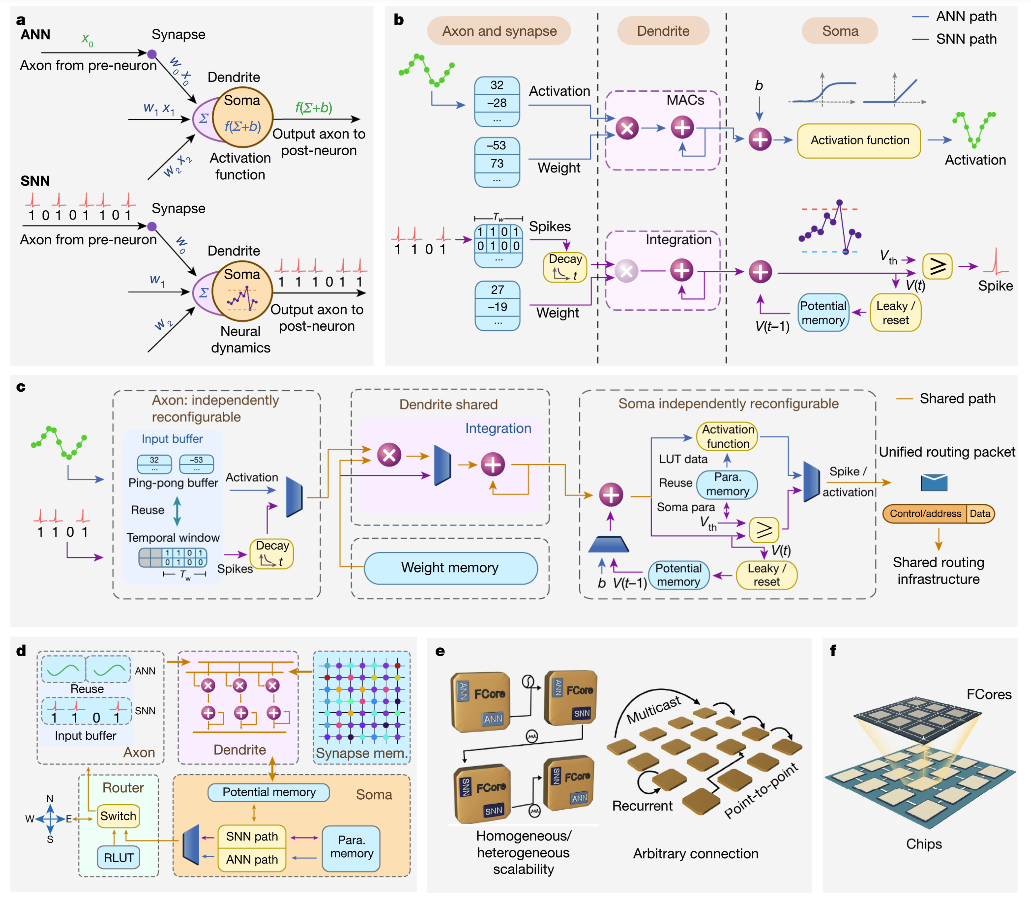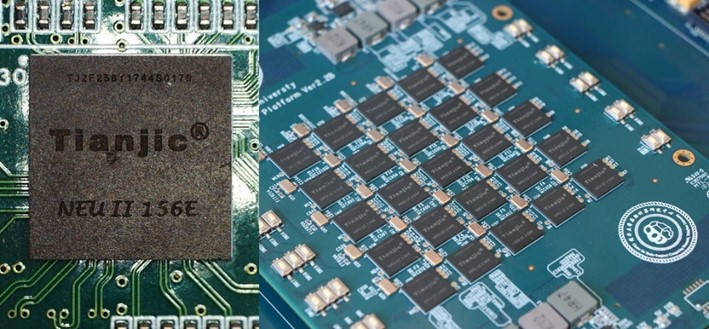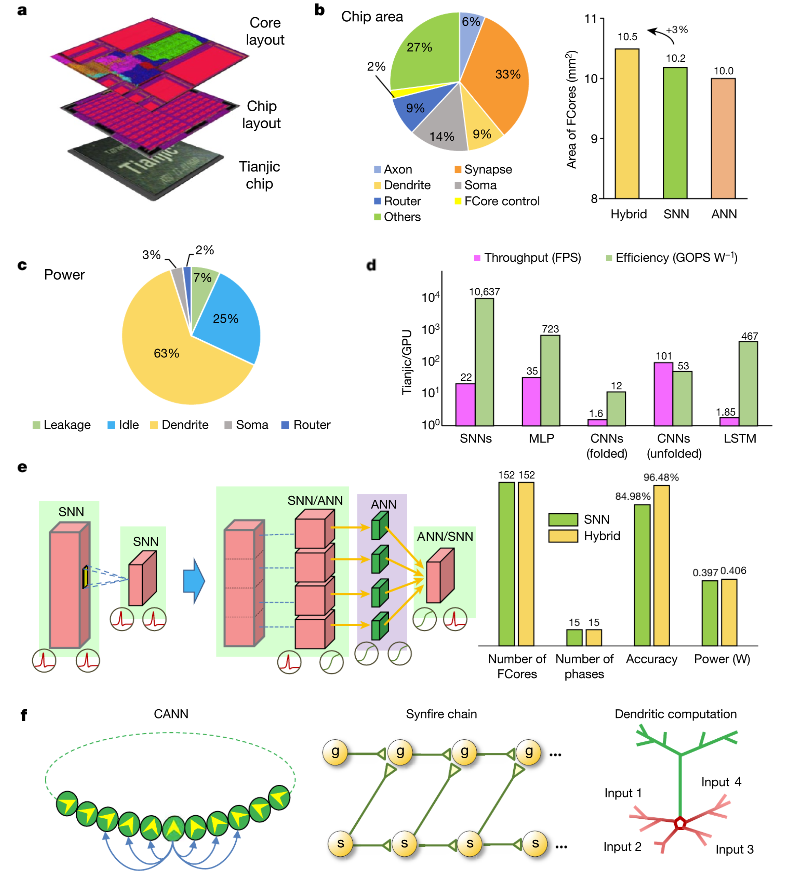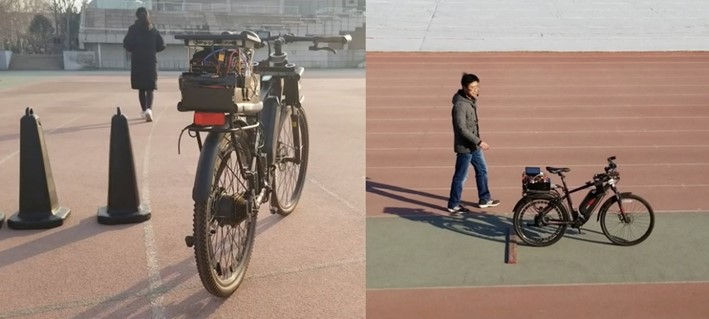Hendrik_2000
Lieutenant General
Yes it is Here is the news pick up by NYT and why is this invention importantThe basic technology is probably more significant than the application in this case.
And Now, a Bicycle Built for None
It’s not the first self-driving bike. But equipped with an A.I. chip, it may be the nearest to thinking for itself.

Image
A frame taken from a video by researchers in China shows a self-driving bicycle, whose neuromorphic computer chip helps it understand certain commands.CreditCreditPei et al., Nature
By
- July 31, 2019
This bike can roll over a bump on its own, staying perfectly upright. When the man walking just behind it says “left,” it turns left, angling back in the direction it came.
It also has eyes: It can follow someone jogging several yards ahead, turning each time the person turns. And if it encounters an obstacle, it can swerve to the side, keeping its balance and continuing its pursuit.
It is not the first-ever autonomous bicycle (Cornell University has ) or, probably, the future of transportation, although it could find a niche in a future world swarming with package-delivery vehicles, drones and robots. (There are out there.) Nonetheless, the Chinese researchers who built the bike believe it demonstrates the future of computer hardware. It navigates the world with help from what is called a neuromorphic chip, modeled after the human brain.
| Sign up for the]
In a paper published on Wednesday in , the researchers described how such a chip could help machines respond to voice commands, recognize the surrounding world, avoid obstacles and maintain balance. The researchers also provided a video showing these skills at work on a motorized bicycle.
or , but the training takes hours to days of trial and error. Even then, the skills are viable only in very particular situations. With help from neuromorphic chips and other new processors, machines could learn more complex tasks more efficiently, and be more adaptable in executing them.
“That is where we see the big promise,” said Mike Davies, who oversees Intel’s efforts to build neuromorphic chips.
Over the past decade, the development of artificial intelligence has accelerated thanks to what are called neural networks: complex mathematical systems that can learn tasks by analyzing vast amounts of data. By metabolizing thousands of cat photos, for instance, a neural network can learn to recognize a cat.
This is the technology that recognizes faces in the photos you post to Facebook, identifies the commands you bark into your smartphone and translates between languages on internet services like Microsoft Skype. It is also hastening the advance of autonomous robots, including self-driving cars. But it faces significant limitations.
A neural network doesn’t really learn on the fly. Engineers train a neural network for a particular task before sending it out into the real world, and it can’t learn without enormous numbers of examples. OpenAI, a San Francisco artificial intelligence lab, recently built a system that could . But the system first spent months playing the game against itself, burning through millions of dollars in computing power.
Researchers aim to build systems that can learn skills in a manner similar to the way people do. And that could require new kinds of computer hardware. and academic labs are now developing chips specifically for training and operating A.I. systems. The most ambitious projects are the neuromorphic processors, including the Tianjic chip under development at Tsinghua University in China.
Such chips are designed to imitate the network of neurons in the brain, not unlike a neural network but with even greater fidelity, at least in theory.
Neuromorphic chips typically include hundreds of thousands of faux neurons, and rather than just processing 1s and 0s, these neurons operate by trading tiny bursts of electrical signals, “firing” or “spiking” only when input signals reach critical thresholds, as biological neurons do.
. Maybe start with helping it learn to ride a bike.

